
a.
To describe: All the possibility for the number of solution of system of two equations in two variables if the graphs of the two equations are a line and a circle.
The maximum intersection points is 2.
Given Information:
The statement is “All the possibility for the number of solution of system of two equations in two variables if the graphs of the two equations are a line and a circle.”
Calculation:
Consider the given table,
Try to imagine all possible systems consisting of a line and a circle, and the respective possible points of intersection.
As shown in the graph, the circle is kept in a fixed position as the line moves, which represents a possible circle-line configuration within the system.
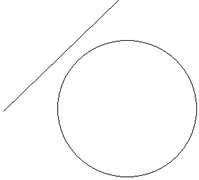
And,
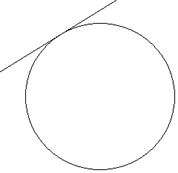
And,
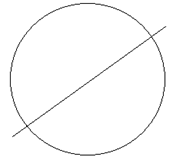
It can be seen that in the above graphs, a possibility is no intersection and no solution. It is also possible that the line is tangent to the circle, indicating a solution.
If neither of these conditions is the case, then the line should intersect the circle at two points, indicating the two solutions.
Therefore, the all the possible case has explain.
b.
To calculate: All the possibility for the number of solution of system of two equations in two variables if the graphs of the two equations are a circle and a parabola.
The maximum intersection points is 4.
Given Information:
The statement is “All the possibility for the number of solution of system of two equations in two variables if the graphs of the two equations are a circle and a parabola.”
Calculation:
Consider the given information,
Try to imagine all possible systems consisting of a circle and a parabola and the respective possible points of intersection.
As shown in the graph, the circle is kept in a fixed position as the parabola moves, indicating the possible circle−parabola configuration within the system.
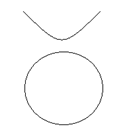
And,
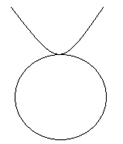
And,
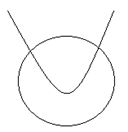
And,
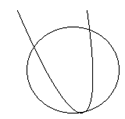
And,
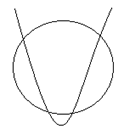
It can be seen that the probability is no intersection and no solution with the help of the above drawn graph. It is also possible that the parabola rests the tangent at the vertex of the circle, indicating a solution.
If the parabola enters the circle, there are two points of intersection, and if the parabola lies below the circle and is inside the tangent, then there are three intersections.
So, the maximum number of intersections can be four if both sides of the parabola "enter" and "exit" the circle.
Therefore, all the possibility has explained above.
Chapter 7 Solutions
PRECALCULUS:GRAPHICAL,...-NASTA ED.
 Calculus: Early TranscendentalsCalculusISBN:9781285741550Author:James StewartPublisher:Cengage Learning
Calculus: Early TranscendentalsCalculusISBN:9781285741550Author:James StewartPublisher:Cengage Learning Thomas' Calculus (14th Edition)CalculusISBN:9780134438986Author:Joel R. Hass, Christopher E. Heil, Maurice D. WeirPublisher:PEARSON
Thomas' Calculus (14th Edition)CalculusISBN:9780134438986Author:Joel R. Hass, Christopher E. Heil, Maurice D. WeirPublisher:PEARSON Calculus: Early Transcendentals (3rd Edition)CalculusISBN:9780134763644Author:William L. Briggs, Lyle Cochran, Bernard Gillett, Eric SchulzPublisher:PEARSON
Calculus: Early Transcendentals (3rd Edition)CalculusISBN:9780134763644Author:William L. Briggs, Lyle Cochran, Bernard Gillett, Eric SchulzPublisher:PEARSON Calculus: Early TranscendentalsCalculusISBN:9781319050740Author:Jon Rogawski, Colin Adams, Robert FranzosaPublisher:W. H. Freeman
Calculus: Early TranscendentalsCalculusISBN:9781319050740Author:Jon Rogawski, Colin Adams, Robert FranzosaPublisher:W. H. Freeman
 Calculus: Early Transcendental FunctionsCalculusISBN:9781337552516Author:Ron Larson, Bruce H. EdwardsPublisher:Cengage Learning
Calculus: Early Transcendental FunctionsCalculusISBN:9781337552516Author:Ron Larson, Bruce H. EdwardsPublisher:Cengage Learning





